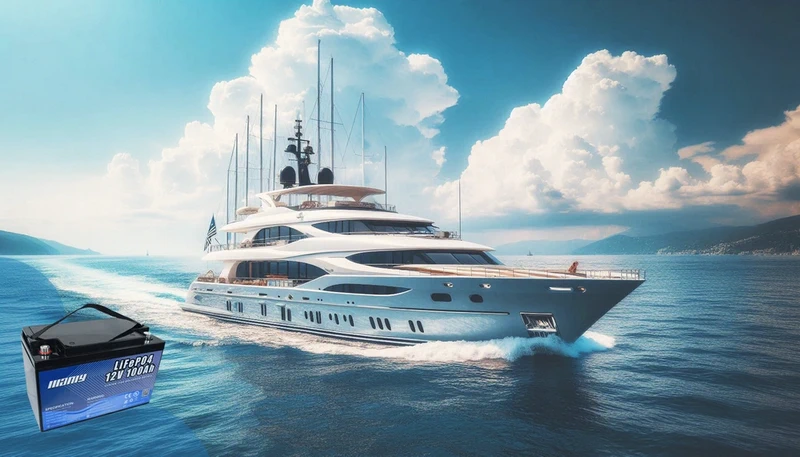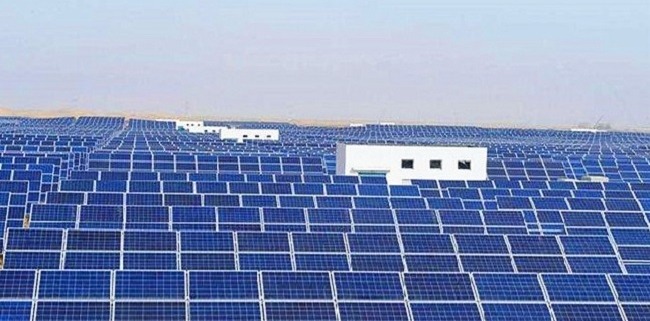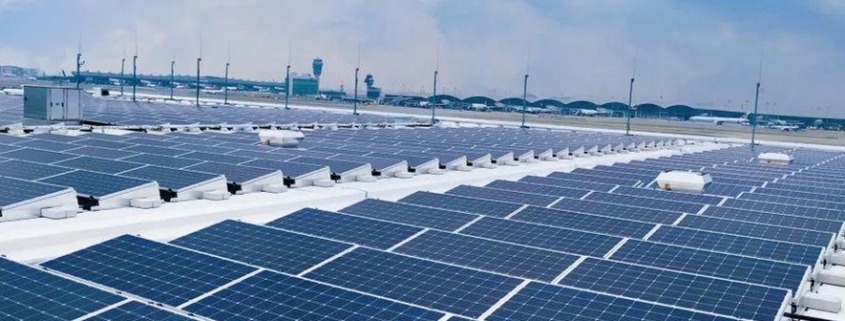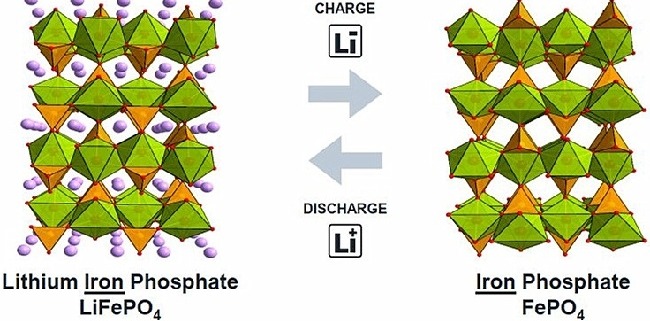Charge a Marine Battery: Step-by-Step Guide
Table of Contents
- Charge a Marine Battery: Step-by-Step Guide
- Understanding Marine Batteries
- Preparing to Charge Your Marine Battery
- Step-by-Step Guide: How to charge a marine battery
- Best Practices for Marine Battery Maintenance
- Conclusion
- FAQ
- Hot Resarch
- French EDF company won the bid for Peru’s 100MW photovoltaic + energy storage project
- Enel Green Power starts operating Texas solar and energy storage project
- The influence of low temperature on lithium iron phosphate battery
Marine batteries are the lifeblood of any boat—they power your engine, lights, gauges, and all the essential onboard electronics. Without a healthy battery, your boat is a pretty shell on the water. In this article, we dive into the burning question: how do I charge a marine battery? We’ll explore everything from the ins and outs of battery types to a step-by-step guide on charging. Plus, we’ll compare the advantages of a marine li ion battery with those of traditional marine deep cycle batteries. Let’s get started on this exciting journey to keep your boat powered and your adventures safe!
Understanding Marine Batteries
1. Types of Marine Batteries
Not all marine batteries are created equal. When it comes to powering your boat, you typically have three choices:
- Starting Batteries: These provide that quick, powerful burst of energy to get your engine running, but they’re not built for long-term power.
- Deep Cycle Batteries: Designed for sustained power delivery, these batteries keep your lights, electronics, and other accessories humming for hours.
- Dual-Purpose Batteries: These offer a blend of starting and deep cycle capabilities, which can be handy on smaller vessels with limited space.
Most boaters prefer marine deep-cycle batteries for extended use and reliability. These batteries handle deep discharges better, ensuring their boats stay powered even during extended trips.
2. Battery Chemistry and Technology
Battery chemistry plays a pivotal role in performance and longevity. Traditional chemistries—like lead-acid, AGM, and gel—have long been the go-to options. However, a modern contender is changing the game: the marine li ion battery.
Why choose a marine li ion battery? Because it’s lightweight, lasts significantly longer, and requires minimal maintenance compared to conventional batteries. Think of it as upgrading from an old clunker to an award-winning sports car in the world of batteries. This cutting-edge technology improves performance and enhances safety and efficiency, making it a popular choice among serious boaters.
Learn more about lithium-ion battery technology on Wikipedia.
Preparing to Charge Your Marine Battery
Before you begin the charging process, a little preparation goes a long way toward ensuring safety and efficiency.
1. Assessing Your Battery’s Condition and Type
First, give your battery a thorough once-over. Check its age, inspect for any signs of corrosion, and verify the battery type. Understanding whether you’re dealing with a marine li ion battery or deep cycle batteries is crucial—it influences which charger to use and how you’ll maintain it. A well-maintained battery lasts longer and performs better when you charge a marine battery.
2. Choosing the Right Charger
Next up is selecting the correct charger. You generally have two main options:
- Onboard Chargers: Permanently installed on your boat, these chargers make it super convenient to power up as long as you have access to a standard outlet.
- Portable Chargers: These allow you to charge your battery wherever you are, which is ideal for smaller boats or when space is at a premium.
Make sure the charger you choose matches your battery’s chemistry and voltage. This step is especially important for those opting for a marine li ion battery or deep cycle batteries—using the wrong charger can lead to underperformance or even damage.
3. Safety Precautions Before Charging
Safety should always be your top priority. Here are some key precautions:
- Work in a Safe Environment: Charge your battery in a well-ventilated area and ensure the temperature is within the manufacturer’s recommended range.
- Clean Battery Terminals: Dirty or corroded terminals can interfere with the charging process, so give them a good clean before you connect anything.
- Gear Up: Wear protective gear such as gloves and eye protection to prevent mishaps.
- Follow Manufacturer Guidelines: Always adhere to the specific recommendations provided by your battery and charger manufacturers.
By taking these simple steps, you will ensure your safety and optimize the performance and lifespan of your battery.
Step-by-Step Guide: How to charge a marine battery
Let’s get into the nitty-gritty of charging your boat’s power source. Follow these steps, and you’ll power up like a pro in no time!
1. Cleaning and Inspecting Battery Terminals
Before you plug anything in, clean your battery terminals. Dirty or corroded terminals can prevent your charger from doing its job, and no one wants a slow charge on a hot day!
- Tip: Mix some baking soda with water, scrub gently with a soft brush, and wipe dry.
- Why It Matters: Clean connections ensure that every bit of energy flows efficiently when you charge a marine battery.
2. Connecting the Charger
Now, let’s hook everything up:
- Positive (Red) Cable: Firmly attach this to the positive terminal.
- Negative (Black) Cable: Connect it securely to the negative terminal.
Double-check your connections, whether using a smart charger that adjusts the current automatically or a trusty manual charger. This step is vital, especially when working with a marine li ion battery or marine deep cycle batteries. Once the cables are locked in, plug in your charger and power it up. Easy as pie, right?
3. Monitoring the Charging Process
Keep an eye on your battery as it charges—this is where modern tech shines:
- LED Indicators: These give you a quick look at the charge level.
- Smart Apps & Timers: Many chargers have apps or built-in timers to let you know when you’re full.
By actively monitoring, you prevent overcharging and ensure your battery gets the right amount of juice.
4. Disconnecting the Charger Safely
When your battery is fully charged, it’s time to disconnect—but do it safely:
- Unplug the Charger: Always start by unplugging the charger from the wall.
- Remove the Negative Cable: Disconnect the black cable first.
- Disconnect the Positive Cable: Finally, remove the red cable.
Following this order helps prevent accidental short-circuits and keeps your battery in shape.
Best Practices for Marine Battery Maintenance
Regular maintenance keeps your battery performing like a champ. Here’s how to keep those power levels up!
1. Maintenance Tips for Prolonging Battery Life
- Routine Inspections: Check for any signs of corrosion or wear on the terminals.
- Clean Regularly: A little cleaning goes a long way in ensuring your connections are solid.
- Water Topping: Top up with distilled water when needed for lead-acid batteries.
By following these habits, you’ll always be ready to charge a marine battery and hit the water confidently.
2. Optimizing Charging Cycles
Different batteries have different needs:
- For a marine li ion battery: Enjoy the benefits of minimal maintenance and the ability to handle deeper discharges.
- For marine deep cycle batteries: Stick to regular, shallow discharges to keep them healthy over the long haul.
Tailoring your charging cycle to the specific battery type maximizes performance and extends lifespan.
3. Troubleshooting Common Issues
Even the best-maintained batteries can run into issues. Watch out for:
- Overcharging: This can overheat your battery and cause damage.
- Undercharging: Leaves your battery underpowered.
- Terminal Corrosion: Hinders efficient energy transfer.
If you notice any problems, check your charger settings and ensure you use the right equipment for your battery type.
Conclusion
1. Recap of Key Points
We’ve broken down how to charge a marine battery step by step—from cleaning and connecting to monitoring and safe disconnection. Each stage is crucial for keeping your boat’s power system in peak condition.
2. Final Tips for Maintaining Both Marine li ion battery and marine deep cycle batteries
Whether you opt for the cutting-edge marine li ion battery or the reliable marine deep cycle batteries, proper care and regular maintenance are your best friends. Tailor your charging habits to your battery’s specific needs, and you’ll enjoy award-winning performance on every trip.
3. Encouragement to Follow Best Practices for Reliability on the Water
Stick to these best practices, and you’ll be cruising with confidence. Keeping your battery in prime condition means fewer hassles and more time enjoying your time on the water. Let’s keep those adventures rolling, shall we?
For more detailed battery care tips and industry insights, check out reputable sources like the U.S. Department of Energy or Wikipedia’s battery technology page. Happy boating!
FAQ
1. Can you charge a marine battery with a regular charger?
While you technically can, it’s not recommended. Marine batteries require a charger that matches their specific chemistry and voltage. A regular charger may not provide the proper charging profile, leading to undercharging, overcharging, or even damage over time.
2. What is the best way to charge a boat battery?
The best way is to use a charger specifically designed for your battery type. Follow a step-by-step process: clean and inspect the terminals, connect the positive and negative cables correctly, monitor the charging process using bright indicators, and disconnect safely when fully charged. This ensures efficiency and longevity.
3.What kind of charger do I need for a marine battery?
You need a charger that is tailored to your battery’s chemistry—whether it’s a marine li ion battery or marine deep cycle batteries. Look for chargers with the correct voltage, charging algorithm, and safety features like automatic shut-off and intelligent monitoring for optimal performance.
Hot Resarch
Marine Battery Battery Manufacturer Lithium Battery
Hello
EDF New Energy Company (EDF EN), a subsidiary of the EDF Group, announced that in a recent tender in Peru, the company has successfully won the bid and won a 100 MW photovoltaic and 100 MWh battery energy storage hybrid power project . The company will be responsible for the development, construction and operation of the hybrid solution, which will be connected to the microgrid in the town of Iquitos in the Peruvian Amazon region.
At the same time, EDF signed a 20-year power purchase agreement (PPA) with the state-owned power distribution company Electro Oriente. The company said that according to the contract, by 2026, the renewable energy company will provide electricity at a price that is more competitive than diesel.
EDF Renewable Energy said that new solar and battery projects will help remote towns offset 40% to 50% of diesel power generation.
Enel Green Power North America has started operating two new clean power plants, including its first renewable energy and storage hybrid project. These new projects coincide with the company’s start of an accelerated growth plan, which involves adding 6.5 GW of new renewable energy capacity and 1.4 GW of energy storage capacity over the next three years.
The 181 MW Lily solar and energy storage project in eastern Dallas is the company’s first hybrid project in North America, which combines a renewable energy plant with utility-scale battery energy storage. The project includes 55 MW of DC battery energy storage, which is part of Enel’s installation of approximately 600 MW of new energy storage capacity on the Texas grid by 2022. Enel also started operating the 140 MW Rockhaven Wind Farm in Oklahoma.
Paolo Romanacci, head of Enel Green Power in the U.S. and Canada, said: “This milestone marks the beginning of a new era for our company as we begin to fulfill our main commitment to the U.S. grid-scale battery storage by combining renewable energy with storage Combining technologies, we are supporting a cleaner and more flexible grid. We are ready to respond to the calls of policymakers and business leaders to accelerate the energy transition in North America. Therefore, we are investing more than ever before to achieve The goal of accelerating growth.”
The Lily Solar and Energy Storage Project is located in the southeast of Dallas in Kaufman County, Texas, and consists of a 181 MW photovoltaic power plant and 55 MW batteries. The project’s 421,400 double-sided photovoltaic panels are expected to generate more than 367 GWh per year, which will be transmitted to the grid and charge the batteries in the same location. The battery storage system can perform power dispatch when solar power generation is low, and at the same time provide a clean power supply to the grid during periods of high demand.
The Lily solar project was initiated and developed by Red River Renewable Energy Co., Ltd., which is a joint venture between Sun Chase Power and an affiliate of MAP Energy Co., Ltd.
The Rockhaven Wind Farm in Murray County and Carter County, Oklahoma includes 49 turbines and is expected to generate 616 GWh of energy per year, enough to avoid more than 359,000 tons of carbon dioxide emissions per year. Through the first virtual power purchase agreement (PPA), Wellington’s management will purchase the 11 MW part of the project’s electricity that is transmitted to the grid. The clean energy contract signed by Wellington’s management is expected to equal or exceed the electricity demand of all its US corporate offices and the residential electricity demand of more than 2,200 employees in the United States.
Enel is currently building five other renewable energy and storage hybrid projects in Texas: Azure Sky solar and storage, Azure Sky wind and storage, Roseland solar + storage, Blue Jay solar and storage and Ranchland wind + storage projects. In addition, the company is also adding a 57-megawatt battery storage system near each power plant to the 500-megawatt high island wind farm and 497-megawatt Roadrunner solar farm in West Texas. Elsewhere in the United States, the company is building a 250 MW 25 Mile Creek wind power project in Oklahoma and a 200 MW Alta Farm wind power project in Illinois.
At present, lithium iron phosphate battery is one of the most widely used batteries on the market. This kind of battery has high safety and long cell life. However, the low temperature performance of lithium iron phosphate battery is slightly worse than that of batteries of other technical systems.
Low temperature has an impact on the positive and negative electrodes, electrolyte and binder of lithium iron phosphate. The lithium iron phosphate positive electrode itself has relatively poor electronic conductivity and is prone to polarization in low temperature environments, thereby reducing battery capacity; affected by low temperature, the speed of graphite lithium insertion is reduced, and metal lithium is likely to precipitate on the surface of the negative electrode. If it is left for insufficient time after charging, put it in When used, the metal lithium cannot be fully embedded in the graphite again, and part of the metal lithium continues to exist on the surface of the negative electrode, which is very likely to form lithium dendrites, which affects battery safety; at low temperatures, the viscosity of the electrolyte will increase, and the lithium ion migration resistance will also increase. In addition, in the production process of lithium iron phosphate, the adhesive is also a very critical factor, and low temperature will also have a greater impact on the performance of the adhesive.
Therefore, lithium iron phosphate batteries are not recommended to be used at low temperatures.






